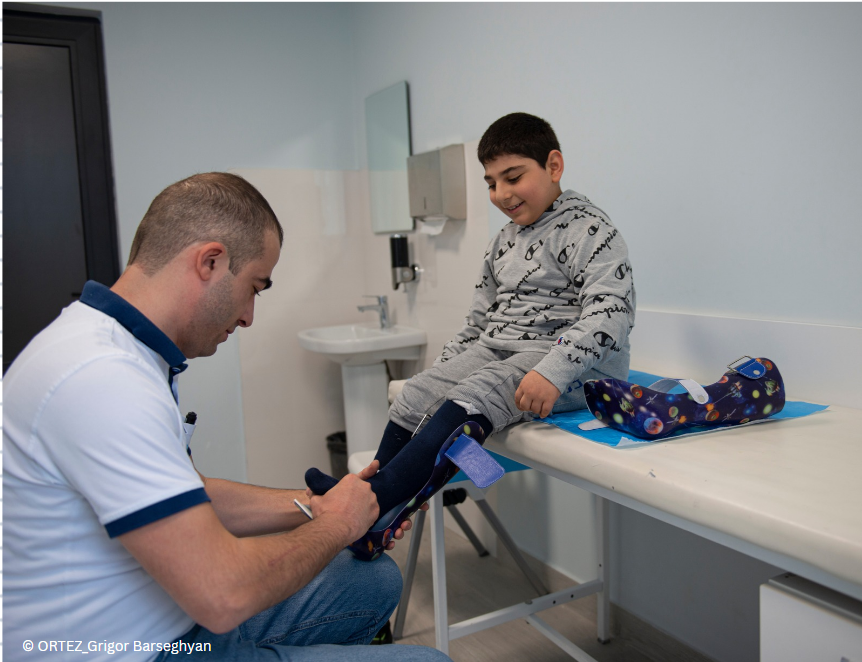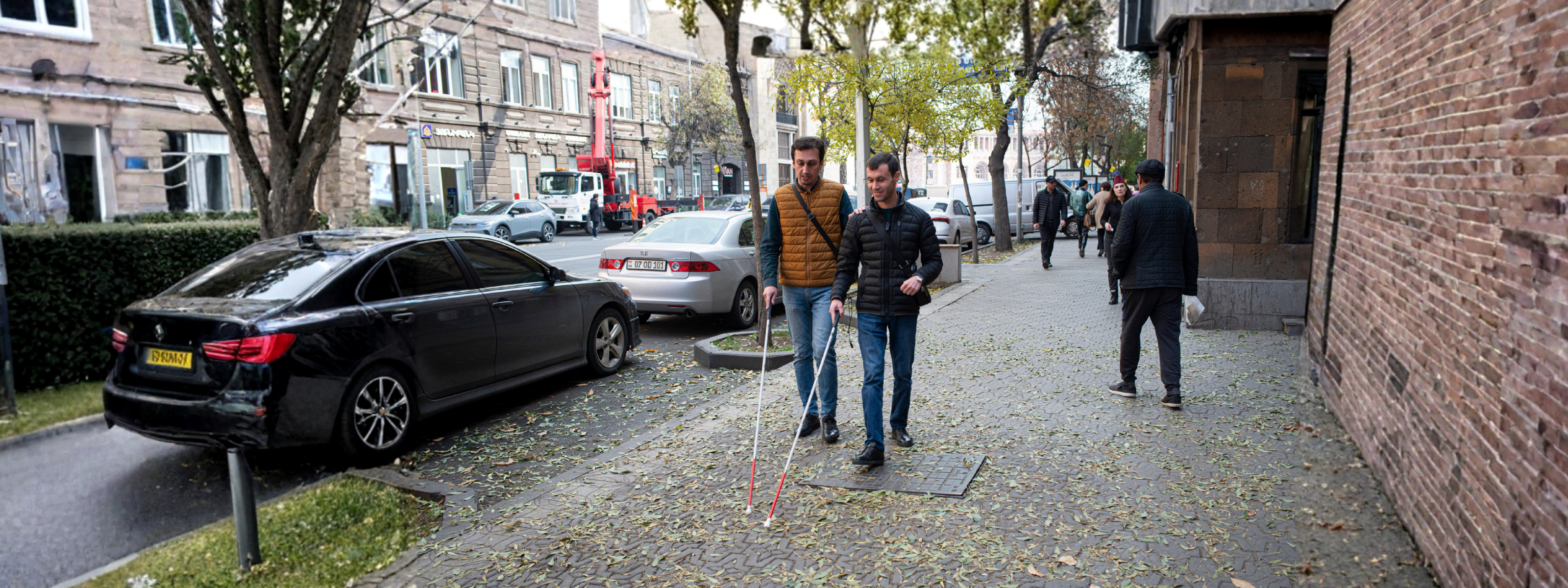ATconnect : unlocking a world of assistive technology information
ATconnect is a curated digital platform designed to connect the assistive technology community to resources and information about assistive technology programmes and organizations, making this information more accessible and easier to navigate. The platform was developed with contributions of the AT community and has two components: a repository of high-quality resources and tools and a global mapping of the programmes and organizations related to assistive technology.
ATconnect has been created by ATscale to advance the vision that every person should have access to the life changing assistive technology they need. It supports ATscales mission to catalyse action, amplify existing efforts and bring together global stakeholders to increase availability of, and access to assistive technology.
The platform complements other assistive technology initiatives and welcomes contributions from stakeholders including assistive technology users, providers, policymakers, educators, researchers, and advocates.
What is Assistive Technology?
Assistive technology (sometimes called “AT”) is an umbrella term for assistive products such as wheelchairs, hearing aids, prostheses, eyeglasses or digital devices, and their related systems and services. Assistive technology is used by a wide range of people including people with disabilities, older people and people with noncommunicable diseases. By enabling participation in community life, including education and employment, assistive technology helps individuals live healthier, more productive, independent, and dignified lives.
Globally, more than 2.5 billion people need assistive technology, a number expected to rise to 3.5 billion by 2050. Today in low-income countries only 10% of people have the AT they need, in stark contrast to the 90% of people in need in high-income countries who do. Addressing this gap is essential to creating a more inclusive and equitable world.

How to use ATconnect
Use the headings at the top to navigate ATconnect. On the Resources and Programmes pages, you can search or browse and apply filters to narrow results.
The Organizations page lists key contributors to global assistive technology access, including donors, professional associations, and organizations that support training.
You can also help grow the site by clicking Submit a Resource or Programme to share your own resource or programme. New resources and programmes are added regularly, so check back for updates. For enquiries, visit the Contact Us page.
Check out the frequently asked questions below for more information!
Frequently asked questions
Resources
ATconnect provides a range of resources related to assistive technology, including: assistive products, services, policies, training materials, and guidelines. Resources published within the last ten years, relevant globally or regionally (particularly in low- and middle-income countries), and openly accessible are included.
Resources included on the site are chosen based on a clear inclusion criteria. Each resource must be relevant to assistive technology, published in the last 10 years, come from a credible source and be freely accessible online. We prioritise resources that are evidenced-based, reflect best practice, cover any aspect of the assistive technology ecosystem and are clearly presented. Resources must be available in English to be included.
You can use keyword or voice searches and apply filters such as resource type, country, region, publication date, and functional domain to make your search results more accurate and relevant. To clear your selections and start a new search, use the Reset button to remove all applied filters. Filters can be removed individually by unticking the options selected.
The results of your search will display in order of publication, with the most recently published resources presented first.
Assistive Technology programmes
The interactive map visually displays the global assistive technology ecosystem. To find out which organizations have a programme in a specific country, please go to the global programmes page. Here, you can use helpful filters to search for assistive technology programmes and obtain information about them. Filter the programmes by functional domain, country, organization’s name and year, among others. Note that only organizations that are either donors of assistive technology programmes, or are directly implementing programmes, are featured.
Assistive Technology programme information was collected in June 2025 via a unique online template, emailed to 39 key assistive technology programme donors and/or implementers. Organizations were asked to provide information on their active programmes in low-and-middle-income countries during 2024 and/or 2025.
To populate the global AT programme map, organizations that fund or implement AT programmes in low- and middle-income countries were invited to submit their programme details via a standardized Google Sheets template, capturing information on their programmes that were operational in 2024 and 2025. Organizations also volunteered programmatic information from other years, which was included. Following submission, the data collected underwent rigorous quality checks. Programme information from 21 organizations was collected on 418 AT programmes globally from 98 countries. Christian Blind Mission reported the greatest number of AT programmes (84) followed by the Latter Day Saints Charity (50) and Humanity and Inclusion (39). India was the country with the greatest number of AT programmes reported by organizations (40), followed by Ethiopia (25), Kenya (24), Uganda (19) and Mozambique (14).
Programmes focusing on mobility were the most frequently reported functional domain (67% of programmes) followed by vision (10%), hearing (8%), self care (9%), communication (3%) and cognition (2%). Service provision was the leading area of programme focus (43%) followed by production provision (27%), training (16%) and advocacy (11%). Multiple sections were permitted for responses. Emergency response programmes constituted 13% of all reported programmes.
This data collection exercise will be repeated in 2026, however, you can submit information on your organization’s assistive technology programmes at any time to be considered for adding to the map, via the Submit a programme or a resource page.
Complementary initiatives
Several global and regional initiatives provide resources and programmes related to assistive technology (AT). ATconnect is designed to complement these efforts, not replace them. Some of the most widely used include:
- Global Cooperation on Assistive Technology (GATE) – A WHO initiative that has over 2,500 members from 135 countries, including assistive technology users, policy makers, service providers, donors, educators, advocates, manufacturers and researchers. (Global Cooperation on Assistive Technology (GATE))
- Global Disability Innovation Hub Knowledge Portal- a new online resource that presents data from research about assistive technology (GDI Knowledge Portal)
- Global Disability Innovation Hub Assistive Technology Innovators Map presents a visualization of key innovators and stakeholders in assistive technology and disability innovation ecosystem across emerging markets. (Map | AT Innovators)
- Physiopedia Rehabilitation Resource Repository shares open sourced publications about rehabilitation. (Homepage : ReLAB-HS Rehabilitation Resources Repository)
- IAPB Vision Atlas is a dynamic platform for global eye health data IAPB Vision Atlas
Get involved!
Yes, you are welcome to submit a resource for consideration for inclusion on ATconnect. All submissions undergo moderation to ensure they meet our quality and relevance standards.
We also encourage organizations to submit information about assistive technology programmes that they fund and or implement, and wish to share with the community.
Practical information
No. You do not need to register. Users can freely access all content.
Yes, the platform supports multilingual access, available in English, French and Spanish with automated translations and manually translated key terms.
New content and resources are reviewed and updated regularly for accuracy and relevance.
We welcome user feedback. You can easily report issues or suggest improvements via our Contact us page.
Yes, the site is fully optimized for mobile access, ensuring seamless use across smartphones, tablets, and desktop computers.
The site does not include:
- Resources that are not open access/publicly available.
- Commercial advertisements or promotional content. All resources provided are curated to remain unbiased, non-commercial, and focused on evidence-based or community-driven assistive technology initiatives.
- Direct medical advice, clinical recommendations, or personal assessments. It serves as a knowledge and resource-sharing platform rather than a service provider for individual care.
- Employment listings and job postings are not within the scope of ATconnect. The platform is designed exclusively for sharing knowledge, programmes, and educational resources relevant to assistive technology.
- Individual stories and testimonials are not typically hosted directly on ATconnect. However, organizations or programmes highlighting individual experiences related to assistive technology may be included if they have educational or community relevance.
Have another question? Click on Contact us to send us a message!

